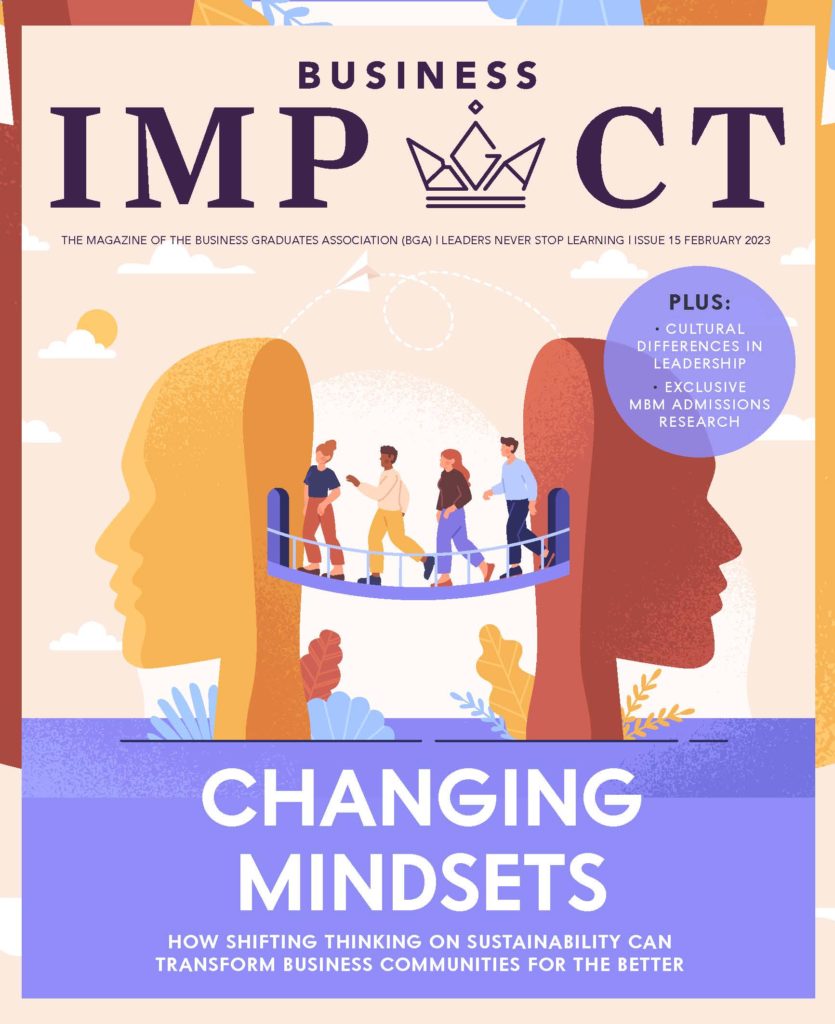Much has been said and written about leadership in the social sciences and popular press. This attention comes as no surprise. Leadership is a pervasive social function found at many levels of our societies. Institutionalised leadership roles exist in virtually all human organisations (from CEOs of companies to presidents of countries and football coaches, for example). In addition, extemporaneous and informal leaders often emerge in small groups of peers. And individuals that engage in the goal‑influencing process that we usually call ‘leadership’ do not only exist in contemporary societies, but they are also found in small-scale, traditional ones.
Leadership is, therefore, a human universal. However, there seems to be no universal way to lead. On the contrary, casual observation suggests that the behaviours and the characteristics of leaders can differ quite substantially across the world. For instance, it is almost a cliché to imagine the prototypical American manager as a very decisive yet participative individual. On the contrary, it is commonplace to believe that the average Japanese boss requests strong deference to hierarchy and stresses status differentials.
Are these impressions true or are such differences based on mere anecdotal evidence? And where do these differences come from? Research shows that leaders (and organisational leaders, more specifically) are indeed expected to behave differently around the world and that these present-day differences might also be due to factors that trace back to our ancient past.
A WEIRD approach to leadership
The study of leadership and of great leaders has a long tradition and features the contributions of world-famous philosophers and intellectuals from the East and the West, ranging from Aristotle to Max Weber. But if one were to read academic articles on leadership published just some years ago or enrol in a leadership course at a Western business school, it would be easy to (mistakenly) think that leadership must be a recent and ‘WEIRD’ discovery.
I do not mean WEIRD as in ‘odd’, but as in ‘Western’, ‘Educated’, ‘Industrialised’, ‘Rich’ and ‘Democratic’. In fact, most modern-day leadership research – and, especially, research on organisational leadership – has traditionally been conducted in Western contexts and with samples composed, mainly, of rich and educated managers, employees, or students coming from a handful of North American and European countries.
The focus on such samples was, at least partly, accidental. Many researchers studying leadership just happened to work in Western countries, where WEIRD subjects abound. It is, therefore, not surprising that most theories have been derived and tested thanks to the observation of a relatively limited and culturally homogeneous subject pool. Yet, this ‘Northern American bias’ begot – and still begets – some key questions for leadership researchers. As we have studied mainly US and European leaders, are our theories and results valid in other cultural contexts? Are the leadership characteristics and behaviours deemed excellent in the West also applicable in other countries? Are we teaching ‘biased’ leadership techniques in our business school courses?
To answer these questions, the field embarked on a truly ‘cross‑cultural leadership’ endeavour in the 1990s and early 2000s, as the rapid globalisation of markets and businesses made it urgent and practically relevant to tackle cross-cultural subjects. The most important study in this field is certainly the GLOBE (Global Leadership and Organisational Behaviour Effectiveness) project, which contributed to drawing a map of how effective leaders should behave in different countries.
A cross-cultural map of leadership ideals
The key idea behind GLOBE is that we all know a leader when we see one. That is, each of us has some ‘leadership ideals’, or some clear ideas of how ideal leaders should behave and which characteristics they should possess. For instance, some of us believe that effective leaders should be democratic and protective of their followers, whereas others think that ideal leaders should be strong and directive.
These ideals might depend on a myriad of individual factors, but the novel notion brought to the fore by GLOBE was that individuals belonging to different cultural groups might share systematically different leadership ideals. These ideals are learned during one’s life (possibly, when one is still young) thanks to interactions with parents, teachers and group leaders in a specific cultural context.
To test the idea that leadership ideals might vary across cultural groups, GLOBE researchers took an apparently simple approach: they asked many individuals directly which leadership attributes they deem more or less desirable. While intuitive, this research effort has been logistically and methodologically titanic. We are talking about thousands of questionnaires administered to middle managers working in hundreds of companies located in about 60 different countries.
Specifically, these questionnaires asked middle managers to rate their perceived appropriateness/effectiveness of more than 100 items describing specific leadership attributes (for example, ‘diplomatic’, ‘bossy’ and ‘administratively skilled’). Thanks to these responses, researchers managed to derive different ‘macro-dimensions’ of leadership (such as autocratic leadership, visionary leadership and face-saving leadership) and to then explore whether such dimensions are seen as more or less effective in different geocultural clusters.
How do cultural attitudes to leadership differ?
“So, how should I behave in different cultures to be seen as an effective leader?” you might ask at this point. As often happens in research, the correct answer to this question is: “It depends.” Yet, the GLOBE results suggest at least three key conclusions for both researchers and practitioners:
• There are some universally positive attributes of leadership. These characteristics are appreciated in virtually all societies studied. For instance, leaders’ descriptors such as ‘communicative’ or ‘dynamic’ are seen as facilitating outstanding leadership everywhere.
• GLOBE also found some universally negative attributes of leadership – ‘irritable’, ‘ruthless’, or ‘dictatorial’, for instance, are all seen as major impediments to outstanding leadership everywhere.
• The GLOBE project highlights some leadership characteristics and behaviours that are particularly effective in some countries, but less effective in others. For instance, followers in Northern Europe tend to prefer ‘participative’ leaders (ie leaders that encourage consensus-based decision-making, delegation and consultation) but do not highly value leader behaviours related to compassion and generosity. However, followers in the Middle East or Confucian Asia tend to see participative leadership less positively and endorse more status-conscious leaders.
Aside from describing ideal leadership profiles for various geocultural areas, results from GLOBE also highlight how specific dimensions of national culture predict differences in leadership ideals. Simply put, the idea is that each society has relatively stable norms and values that tend to be endorsed somewhat homogeneously by all its members. In turn, these stable norms and values – culture, in short – predict the expectations about leadership that each society has.
For instance, societies scoring highly on the cultural value of power distance, where hierarchical differences are seen as normal and are widely accepted, tend to prefer more directive leadership and less visionary and inspirational leadership. Societies with a high uncertainty avoidance, which rely on formal and informal rules to cope with the uncertainty of future events, tend to endorse compassionate and generous leaders.
Where do these differences come from?
The GLOBE results offer us a valuable and complex picture of what individuals want from their leaders across cultures. This descriptive evidence is vital for researchers and practitioners alike, who often need to manage teams in which members come from different cultures, or work in multicultural environments.
Yet these studies do not answer some more basic questions about the origins of such differences. Why do cultural differences in leadership ideals exist? Where do these differences ultimately come from? Why do we even like the leaders we actually like?
These questions are rather novel, so it is not so surprising that most leadership theories are still relatively silent on them. Some suggest that the differences in leadership ideals across the world might be driven by the differences in political and economic environments. Others indicate that geographical factors might play a role. Other theories imply that pre-existing cultural differences such as religion, philosophical tradition or other dimensions of culture might cause societies to have different expectations about leadership.
The influence of pre-industrial agricultural practices
While all the previously mentioned factors are probably important, they might not give the whole story. In a study published in The Leadership Quarterly, I explore an alternative possibility: whether pre-industrial agricultural practices are related to contemporary leadership ideals and organisational practices.
This work moves from a simple observation derived from the GLOBE data. In some societies, leaders are expected to delegate, empower their subordinates and be consultative, whereas leaders demand more obedience and provide clear guidance to their subordinates in other societies. Why do these differences exist?
Building on literature in anthropology, archaeology and classical comparative history, I suggest that agricultural intensification in pre-industrial times (for example, the use of the plough, irrigation and hillside terracing) generated important societal changes that led to the emergence of more authoritarian and directive forms of leadership.
Intensive agriculture brought about an increase in group size, complexity and diversity that called for the emergence of stronger and more directive leaders that could ‘manage’ and coordinate such complex groups. The higher agricultural yield achieved as a result of these new agricultural techniques, meanwhile, often allowed a handful of individuals to control a large portion of economic resources, promoting the emergence of wealthier and more powerful elites. These powerful individuals could eventually stabilise their ruling position and possibly shape followers’ preferences for, and perceptions of, leadership.
Therefore, pre-industrial agricultural intensification probably caused shifts in the types of leaders that emerged in the most intensively cultivated areas. I believe that this process contributed to generating persistent changes in the leadership ideals typical of different societies, which were then transmitted over time from parents to children.
Following a recent stream of research in economics, psychology and evolutionarily informed social sciences, my article investigates how these ancient factors might still influence present-day leadership ideals and organisational structures. I do not rely on traditional historical methods to study this question, but on quantitative data and statistical methods. Specifically, I use a dataset that matches current countries and regions to their ‘most likely pre-industrial ancestors’, quantifying the intensity of the agricultural practices of the past with ethnographic data.
Then, I link this country-level information with data retrieved from the GLOBE project, finding a relationship between the agricultural intensity of the past and contemporary participative leadership ideals. Further building on this idea, I then show that traditional agricultural practices (as well as the geoclimatic conditions that predict which subsistence mode was likely to emerge in each country or subnational region) also predict whether companies’ headquarters delegate more decisions to local plant managers.
Finding a practical way forward
Results that link ancient practices to present-day leadership styles are fascinating. Yet, some readers might rightly ask: “Do I need to become an anthropologist to understand how to manage cross-culturally?” or “why should managers and policymakers care about the historical origins of cross-cultural differences in leadership ideals?”
The practical application of these results has less to do with agriculture per se and relates more to the idea that cultural leadership ideals might be remarkably stable in time and space. This has important implications, for instance, for expatriate managers, who must learn how to lead in a different culture and may struggle to adjust to local expectations, even after a long time.
These results might also have repercussions on companies. The forces of globalisation and information technology are strong, yet they might not be strong enough to cause a ‘homogenisation’ of leadership ideals among multicultural workforces any time soon. Finally, these results could also be relevant for policymakers, because understanding the temporal persistence of leadership ideals means being able to better predict whether such cultural preferences might be changed, how, and how long it might take to do so. The applications can be numerous.
Think, for instance, about a key topic: leadership and gender. Women in high-ranking positions of power – be it in business or politics – are becoming more and more numerous but, unfortunately, they remain a minority. These gender differences are more marked in some countries than others and this is, in part, because of deep-rooted cultural leadership ideals that do not favour female leadership. Understanding where these leadership ideals come from and how persistent they are might help policymakers to change them for good, promoting women’s equal participation in the job market and their emergence as leaders.
We should, however, be cautious in applying the findings of my study to real-world leadership practices as there are a number of caveats. The results are not based on individual-level data, but rather on country- or region-level data. The data, therefore, does not reveal the mental or social processes involved with the formation, transmission and possible change of leadership ideals. In addition, implying that leadership ideals are persistent does not mean that they are completely fixed or unmodifiable. To this extent, major changes in one’s environment might very well generate tremendous pressure for a change in cultural leadership ideals.
Some researchers have started to ask questions about this change process by studying, for instance, the evolution of leadership ideals in countries that have experienced rapid economic or political changes. Personally, I have started to study how leadership preferences shift when individuals experience major environmental changes after a migration, asking how long migrants and their descendants can hold on to their leadership ideals of origin, even after arriving at a new location.
Moreover, an extension of the original GLOBE project is now being conducted, identifying and measuring any changes to the cultural norms in different countries over the past 30 years. All these results are, and will be, important in helping us understand if and how we should revise our map of cross-cultural leadership differences in the years to come.
Putting varying attitudes in context
Over millennia, humans have produced a staggering amount of cultural diversity. People living in different societies tend to have different values, norms and habits. We cook foods differently. We have different dietary restrictions or taboos concerning premarital sex. We have a host of different preferences, behaviours and institutions. To this extent, leadership is no exception. Across cultures, individuals often expect different behaviours and attributes from their leaders. In turn, a better understanding of these differences is key for managers, politicians and policymakers that lead multicultural teams or work in unfamiliar cultural milieus. But understanding cultural differences in leadership also has more basic, fundamental implications, helping us to better understand who we are, where we come from and where our societies might be going in the future.
Mindfulness is key. Navigating the international business landscape means cooperating with colleagues, hiring new staff and working under the direction of bosses and managers whose attitudes might be based on value systems that are seemingly alien to you. When engaging with these people, it is crucial to understand the deeply ingrained nature of many of their values. Employees and organisations do not live lives that are divorced from history. Each person stands at the head of traditions snaking back through centuries.









